The Lab: Hope Union Gravity and Trail pedals
The UK machining specialists Hope offer 2 clipless pedals made for hard mountain biking: the Hope Union Trail and Gravity. Both models offer a lot of adjustment options, promising to adapt to your exact preferences. We tested the pedals for over eight months to find out whether they’re able to deliver on this promise.

Weight 544 g (Gravity model with Foot Plates and pins) | Manufacturer’s website
Like all contact points between the rider and bike, pedals are a matter of taste, and the flavours are as different as the menus of the Indian, Chinese and Italian take-out services around the corner. It’s for this reason that Hope offer such a high level of adjustability and rely on an in-house click mechanism. It might look like Shimano’s SPD standard, though it functions very differently. The Trail and Gravity mountain bike pedals both have a cage around the click mechanism. The cage on the Trail model is somewhat narrower than the huge cage of the Gravity pedal, providing a bigger footprint on the pedal once it’s been properly adjusted for your shoes.
Before you attach the cleats to your shoes, you can use the so-called cleat shimming gauge supplied by Hope to determine which shim to use under the cleats. That way you’ll know that the cleat is at the correct height so that the pins still make contact with the sole of your shoe. Hope provide two shims in different thicknesses. You also get a choice of two cleats, offering a 4° float and 12° release angle or a 5° float and 13° release angle. Whichever you choose, both cleats allow for 2 mm of lateral play from left to right on the pedal and are included with the pedals.
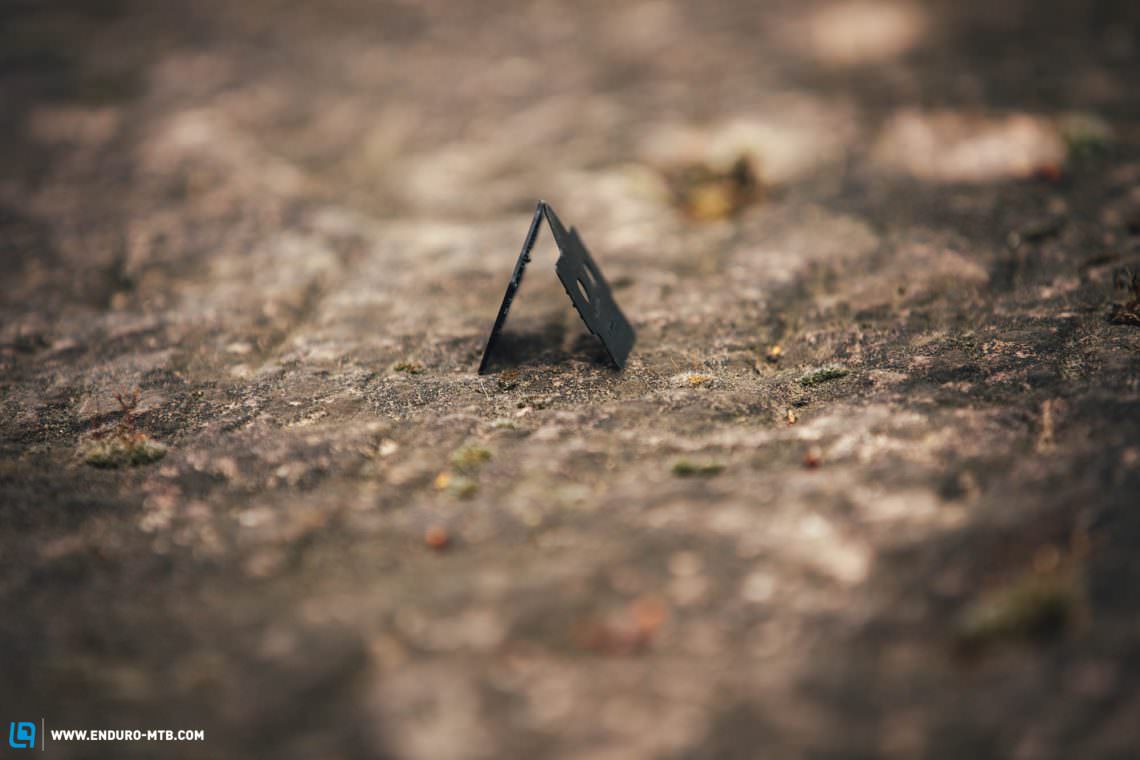
Despite looking very similar to Shimano’s SPD mechanism, Hope’s click mechanism follows a different principle: both sides of the mechanism are spring-loaded, thus providing more freedom of movement on the pedal. In addition, clicking in and out doesn’t feel as harsh and mechanical as you would expect from an SPD system. The preload of the spring can be adjusted, determining how easily you can clip and unclip your shoes. There’s a gauge on the mechanism to indicate the preload tension, which makes it easy to set the same preload on both pedals.
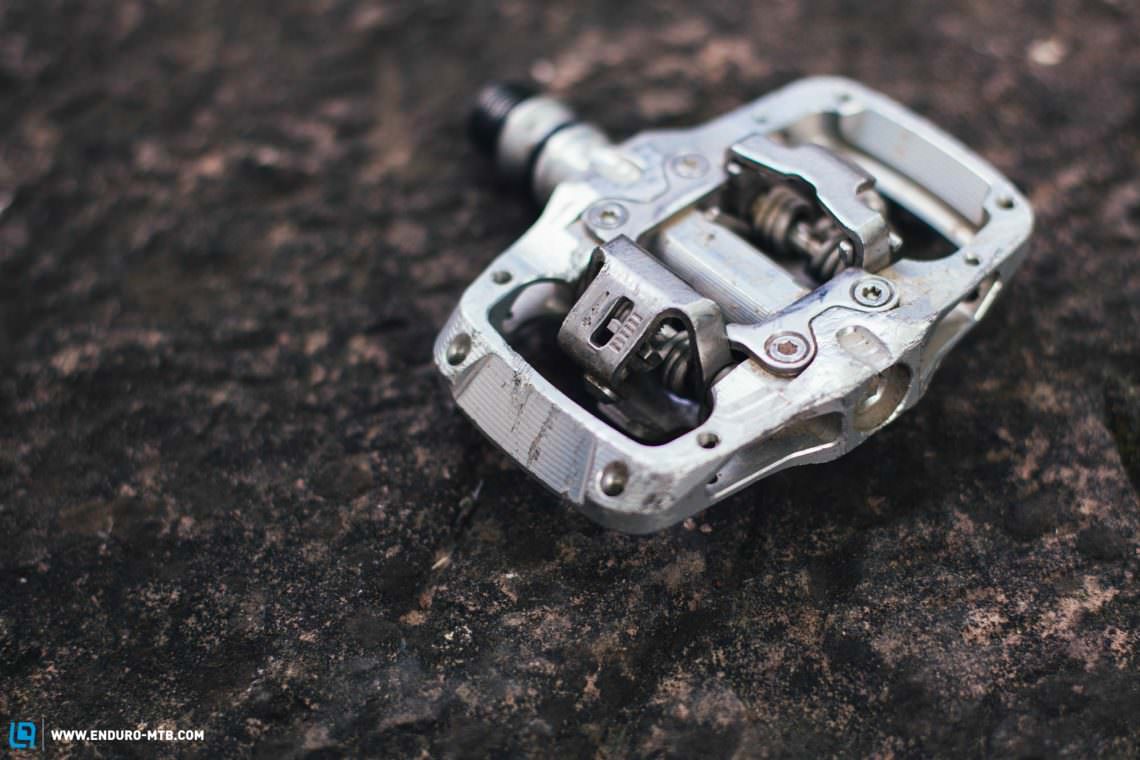
In addition to the adjustability of the click mechanism, you can make adjustments to the pedal cage. The height of the pins can be adjusted via washers to ensure the best possible contact with your shoes. With the Gravity pedal, Hope also supply so-called Foot Plates with horizontal grooves to allow for greater contact between the shoe and the pedal. These Foot Plates can be attached using either flat screws or pins. With the latter, you get maximum grip between the shoe and pedal, giving you the additional stability offered by a flat pedal design along with the benefits of a clipless mechanism.
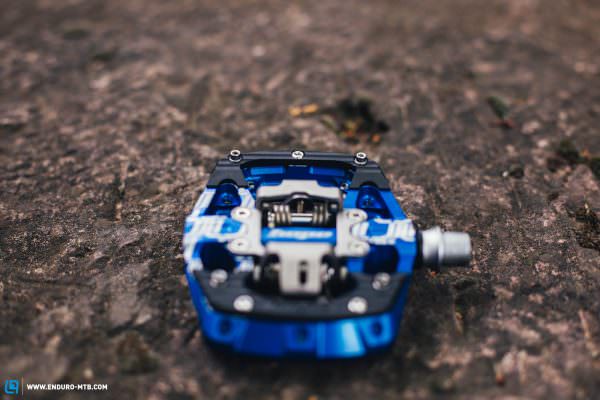
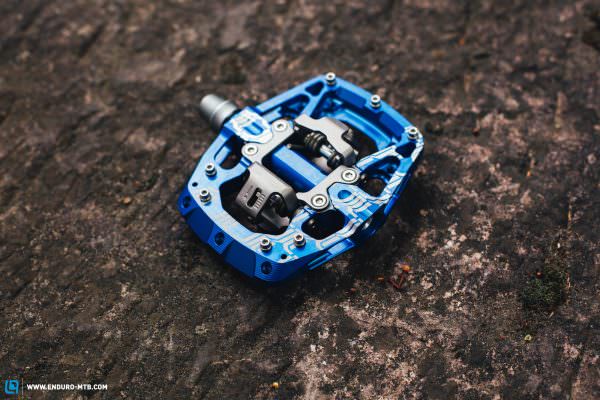
The pedal cage is CNC machined from aluminium and the axle is made of high-strength stainless steel. The pedal body spins on three ball bearings and a bushing, promising maximum longevity. After more than eight months, we found everything spinning freely and no signs of play. If you do hit your pedals on the ground, both models tend to glance off rather than dig themselves in, and you’ll hardly see any scuff marks on the cage. The stainless steel cleats and the click mechanism still looked good and showed no major signs of wear at the end of our review. In future, Hope also want to offer titanium axles, which will save you 40 grams and give you additional bragging rights.
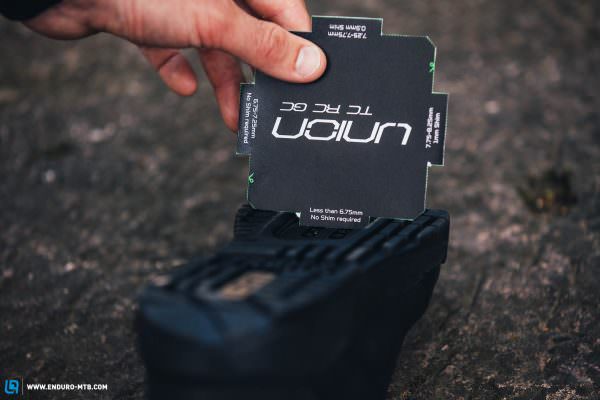
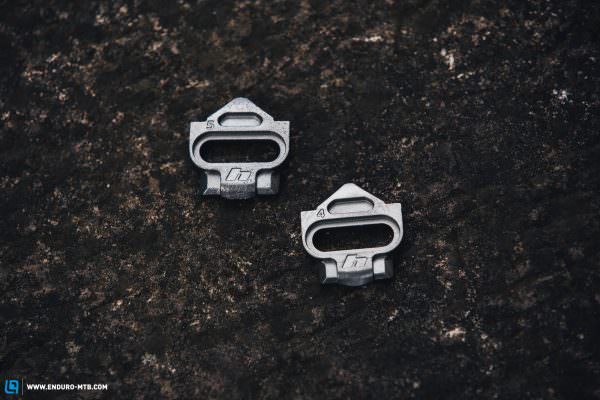
If you’re keen to experiment, we’re sure you’ll find happiness with the Hope pedals. Try something new and you’ll be rewarded with a solid footing, offering plenty of adjustment options for virtually any riding style. Thanks to the Trail and Gravity variants, you can choose between a small or big footprint, both of which offer a level of quality and longevity that justify the € 185 and € 195 price points.
Tops
- excellent adjustability
- smooth engagement and lots of lateral support
- high-quality workmanship
Flops
- hefty price
